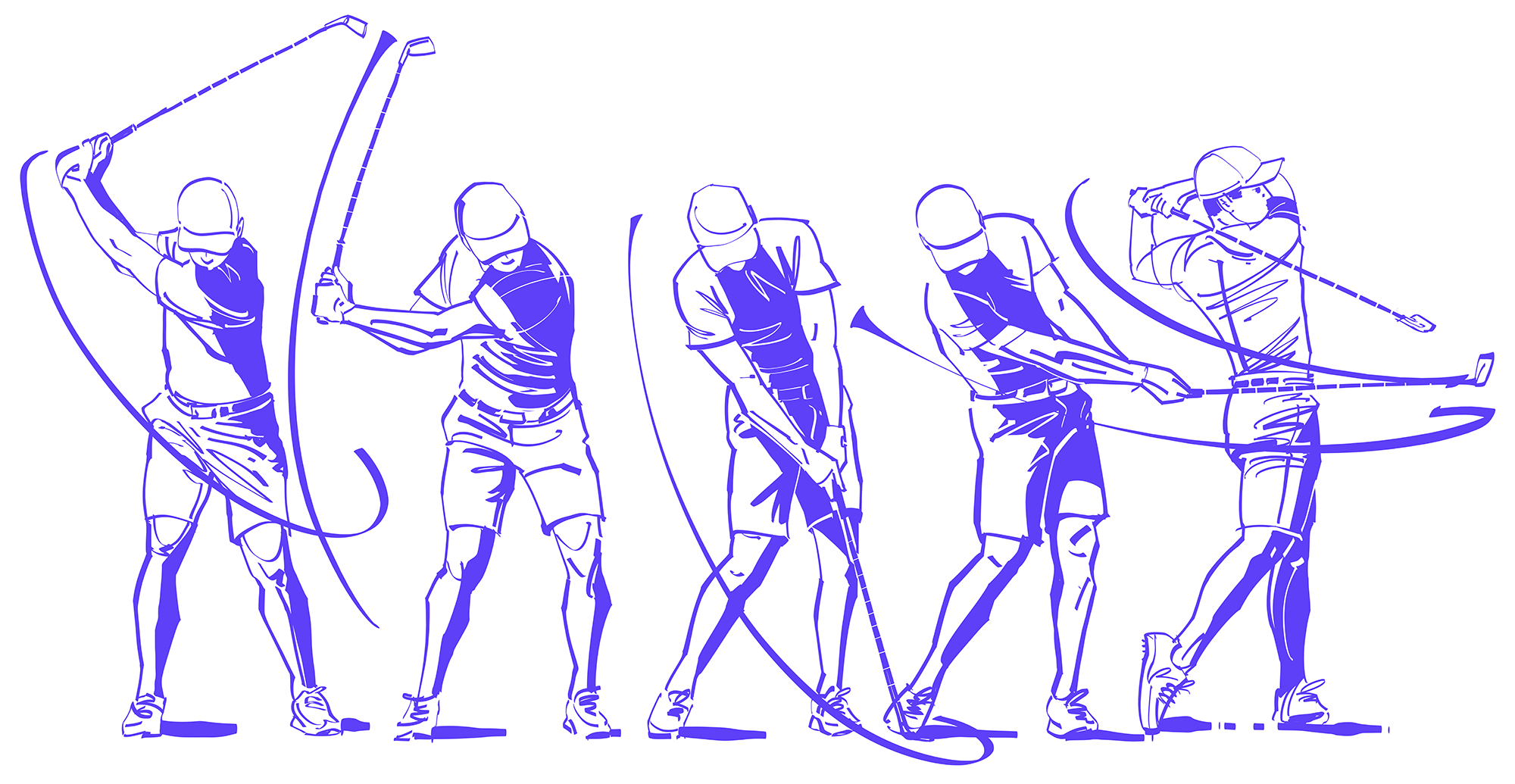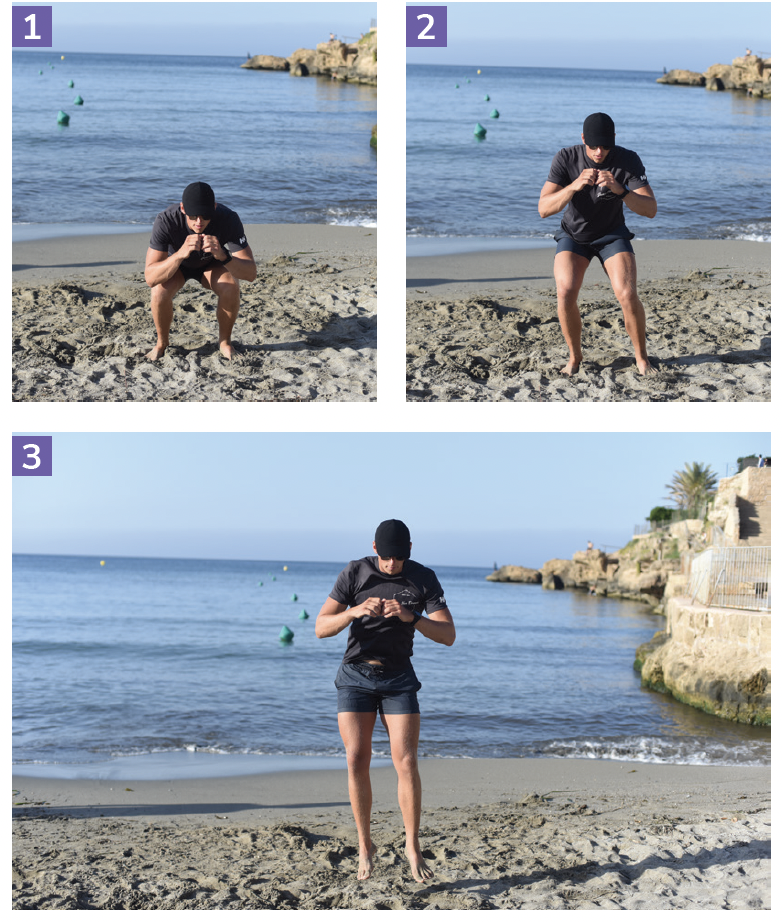Loading Up To Create Force
Book Extract
Before exploring the SUP paddle stroke in detail, it is worth looking at things from a macro point of view. It is helpful to consider other sports where an athlete loads their body to create directed force.
Golf: The golf swing comprises a wind-up (the backswing), a pause, a downswing, an impact and a follow-through. The clubhead travels at a remarkable 120mph when it hits the ball. This is achieved through the coiling and uncoiling of the body. The golfer creates incredible speed by creating tension between the upper and lower part of their body. The lower moves ahead of the upper to create tension, similar to stretching an elastic band between the fingers. There is then perfect timing at impact to harvest this elastic energy. A good golf swing has tempo and a balance of relaxation coupled with power.

A good golf swing has a balance of relaxation coupled with power
Standing jump: To get maximum height out of a standing jump, the athlete uses their upper body to push their feet down into the floor. This creates the storage of energy. This energy travels downwards and then upwards to enable the feet to leave the floor like a spring. The athlete uses their upper body to maximise the height gained. There is a storage of energy, an explosive change of direction and a release. The height jumped will be much reduced if the athlete does not drop down first and does not use their upper body to generate energy. There is a dynamic between relaxation and stiffness. The athlete relaxes into stored energy. They then stiffen at the point the energy is applied to the floor, before relaxing the body again to allow the energy to be fully expressed and not wasted through any tension.

See how the athlete stores energy by pushing into the ground first
Karate punch: The punch is based on creating power from twisting. Twisting forces are called torsion, and the human body is well equipped to generate such forces. The karate punch relies on relaxation to store energy, a rapid change of direction to create acceleration, full-body engagement to develop maximum power, bodily stiffness at the point of impact and a release after impact. Anyone who attempts to be ‘strong’ throughout the punch appears stiff and cannot achieve the forces and speed of an accomplished black belt.
In all these examples, the athlete stores energy by moving the body in the opposite direction to the one they intend to go. The stages are storage, pause, return, impact and, finally, release. The body is only ‘stiff’ during impact.
Imagine you are standing on your paddleboard without a paddle. How would you move it forwards from a standing position? The only way would be by using your body to create effective movements in your feet. Try it and feel what we mean.
It is possible to generate board movement (in a standing position) without a paddle or access to external instruments. Notice the wind up of the body and the need to stiffen to initiate the board’s movement.
Now imagine you are standing on your board, and this time there are two guide wires on either side of you within easy reach of your hands. (A bit like you might find on a pedestrian bridge over a ravine.) Imagine the way you would use your body to drive the board forwards while you hold the guidewires. You would probably reach forward as far as you could, bending at the hips and then use your core and legs to drive the board forward.
Next, imagine you are standing on the board, but there is only one guidewire on the right-hand side. Imagine how you would use your body to move forward now. Your right hand would reach forward and pull on the wire. You would hinge at the hips to get as long a reach as possible. Your core would work extra hard to fight the urge that the board would now have to rotate towards the right. Your core would probably twist away from the wire to get extra power. You might stand offset on the board to the fight it veering offline.
All three of these visualisations are helpful to illustrate the role of the hips, the core and the legs in generating motion.

It is possible to move the board forward without using a paddle by bending the knees and straightening up